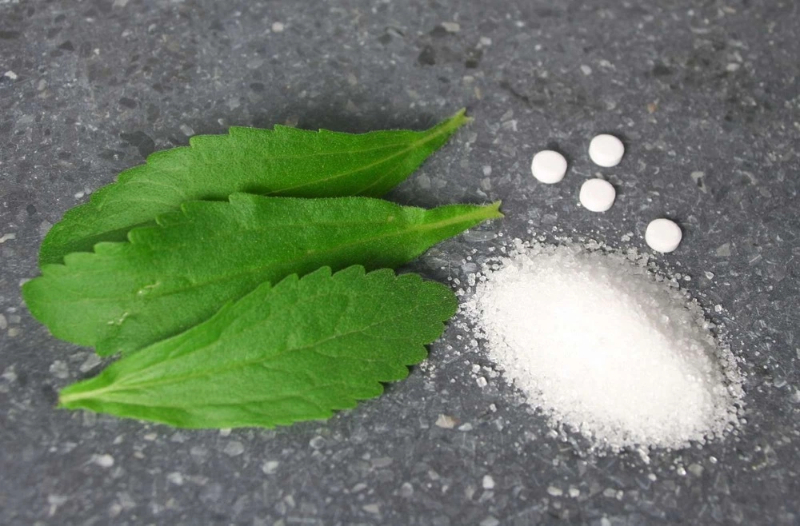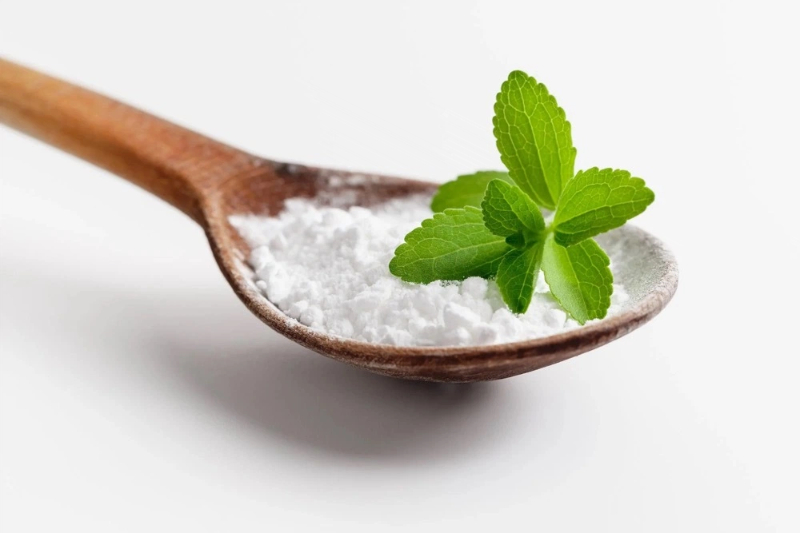Views: 222 Author: Sara Publish Time: 2025-11-01 Origin: Site








Content Menu
● Natural Origin and Plant Background
● Natural Origin vs. Processing Steps
● Naturalness and regulatory perspective
● Technical Profile and Sweetness Dynamics
● Taste, Texture, and Mouthfeel Innovations
● Safety, Regulation, and Compliance Across Regions
● Industrial and Commercial Applications
● Our Value Proposition for Overseas Manufacturers
● Formulation Guidelines and Practical Tips
● Sustainability and Supply Chain
● Market Trends and Regional Outlook
● Quality Assurance, Technical Support, and Consumer Education
● Regulatory Snapshot (Representative Regions)
● Timeline for Market Readiness
● FAQ
>> 1. Is stevia natural or artificial?
>> 2. What is Reb A, and why is it important?
>> 3. Can stevia be used in baked goods and high-temperature products?
>> 4. How should stevia be blended with other sweeteners?
>> 5. What regulatory approvals are needed for using stevia in international products?
Stevia has emerged as one of the most talked-about sweeteners in recent decades. As a Chinese factory specializing in natural sweeteners, functional polyols, and dietary fibers, we recognize the growing interest from overseas manufacturers in clean-label ingredients that support health and wellness. This article explores whether stevia is natural or artificial, how stevia sweeteners are produced, their sensory and functional profiles, regulatory considerations across major markets, and practical applications in the food, beverage, and healthcare sectors. The discussion also highlights how our blended-sweetener development, tablet production, and OEM/ODM services can support international partners seeking high-quality stevia-based solutions.

Stevia rebaudiana, a shrub native to South America, has long been used by indigenous peoples to sweeten beverages and foods. Today, stevia-derived sweeteners are produced by extracting steviol glycosides from leaves and purifying them into highly concentrated compounds, primarily stevioside and rebaudioside A (reb A). The core question—"Is Stevia natural or artificial?"—depends on the interpretation of natural origin versus processing. While the glycosides are natural products of the plant, the commercial products undergo purification and concentration steps that modify the original leaf material, resulting in refined ingredients with specific purity standards.
- Plant-based source: Steviol glycosides exist in the leaf tissue of Stevia rebaudiana, with Reb A often representing the major contributor to sweetness in many modern extracts.
- Extraction methods: Industrial production employs water, ethanol, or other food-grade solvents to extract glycosides from leaf material, followed by filtration, chromatography, and crystallization to isolate and purify the desired compounds.
- Purity grades and forms: Depending on intended use, stevia ingredients are sold as stevia leaf extract, stevia powder, or high-purity Reb A isolates, sometimes in liquid formats or microencapsulated forms for stability.
- Natural labeling: In many jurisdictions, stevia leaf extract and Reb A are permitted as natural sweeteners when produced through conventional, food-grade processing. However, higher purification levels and concentrated forms may be described as refined ingredients rather than whole-leaf equivalents.
- Consumer perception: Some consumers equate "natural" with minimal processing. From a biochemical standpoint, steviol glycosides are natural plant compounds, but their extraction and refinement create ingredients that are not identical to raw leaves.
- Global regulatory nuance: Different countries assess naturalness and processing levels in distinct ways, influencing labeling language and permissible usage levels.
- Glycoside composition: Reb A is often prized for its clean taste and relatively low aftertaste, while stevioside can contribute more pronounced aftertastes if used alone.
- Relative sweetness and concentration: Reb A can be about 200–400 times sweeter than sucrose, with sweetness levels influenced by formulation and the presence of other glycosides.
- Sensory optimization: Achieving a balanced sweetness often requires formulation strategies to suppress bitter or licorice-like notes, especially at higher concentrations.
- Clean sweetness at proper ratios: High-purity Reb A extracts tend to deliver a smooth sweetness with minimal aftertaste when used within optimized blends.
- Role of mouthfeel enhancers: To mimic sugar's body and fullness, stevia is commonly combined with polyols (erythritol, xylitol) or other natural sweeteners (monk fruit), which helps reduce aftertaste and improve the sensory profile.
- Application-driven blends: Our OEM/ODM capabilities enable custom stevia-containing blends tailored for beverages, dairy, baked goods, confectionery, and healthcare products, balancing sweetness, texture, and caloric considerations.

- GRAS and approvals: Steviol glycosides, including Reb A, have gained GRAS status in the United States and are approved by EFSA in the European Union, among other national regulators, with specifications for purity and usage.
- Labeling and claims: Labeling varies by market, with common descriptors including "stevia extract," "steviol glycosides," or "Reb A." Regulatory claims often require adherence to regional thresholds for sweetness equivalence and usage limits.
- Health positioning: Stevia offers non-caloric sweetness, supporting products targeting sugar reduction, glycemic management, and weight-conscious consumer segments.
- Beverages: Stevia-based sweeteners are widely used in cold and hot beverages, including ready-to-drink teas, energy drinks, flavored waters, and coffee products.
- Dairy and dairy alternatives: Yogurts, dairy beverages, and plant-based milks leverage stevia to reduce added sugars while preserving mouthfeel and flavor balance.
- Baked goods and snacks: Using stevia blends in cookies, cakes, pastries, and snack bars enables sugar reduction without compromising texture or browning.
- Healthcare and nutraceuticals: Stevia-based sweeteners are employed in oral care products, fortified beverages, and dietary supplements that require avoidance of added sugars.
- Blended-sweetener development: We design custom blends pairing stevia with natural polyols, monk fruit, and other clean-label sweeteners to achieve targeted sweetness and mouthfeel for specific product categories.
- Tablet production: Our capabilities include formulating stevia-containing tablets with optimized disintegration, palatability, and stability for dietary supplements.
- OEM/ODM services: We offer private-label blending, packaging formats, and regulatory-compliant ingredient declarations tailored to regional markets and brand positioning.
- Purity considerations: Higher Reb A content generally yields cleaner taste and stronger sweetness but may entail higher costs. Selecting the right grade for a given product is essential.
- Synergistic blends: Pair stevia with erythritol, xylitol, or monk fruit to improve mouthfeel and reduce aftertaste, achieving sugar-like sweetness with lower total sweetness intensity.
- Stability under heat: Steviol glycosides are relatively heat-stable, enabling use in baked goods and hot beverages; nonetheless, balancing flavor remains important in heat-processed products.
- Solubility and dispersion: While most stevia extracts are water-soluble, certain matrices require formulation strategies to ensure uniform dispersion and sensory performance.
- Agricultural sourcing: Consistent quality begins with responsible cultivation practices, leaf purity, and traceable supply chains.
- Processing innovations: Advances in purification, crystallization, and filtration impact yield, purity, and sensory outcomes.
- Traceability and transparency: Clear origin and processing documentation supports regulatory compliance and customer trust.
- North America: Growth in low-sugar and zero-calorie segments increases demand for Reb A-rich blends for beverages and dairy products.
- Europe: Preference for clean-label and natural ingredients drives stevia adoption across confectionery, yogurt, and soft drinks, often in combination with other natural sweeteners.
- Asia-Pacific: Rising interest in health-focused products and OEM/ODM projects creates opportunities for stable stevia ingredient supply and customized formulations.
- Analytical rigor: Comprehensive testing for purity, glycoside composition, heavy metals, pesticide residues, and microbiological safety is standard in our quality systems.
- Shelf-life and stability: Guidance on formulation and storage conditions helps maximize sweetness retention and sensory quality over time.
- Technical collaboration: We provide formulation support, sensory evaluation, and compatibility testing with base ingredients and packaging formats.
- Allergen considerations: Stevia itself is not a major allergen, but complete product formulations must account for cross-contact during processing.
- United States: Steviol glycosides and Reb A are permitted as sweeteners with appropriate specifications; GRAS determinations require consistent quality controls.
- European Union: Steviol glycosides are approved with labeling requirements and defined usage levels by product category.
- Other markets: Additional regulatory regimes exist worldwide, each with unique purity, labeling, and usage guidelines; partners should verify local requirements.
- Supplier verification: Confirm leaf source, processing methodology, and third-party testing to ensure target purity.
- Formulation development: Align target sweetness, mouthfeel, and flavor balance with product attributes and consumer expectations.
- Scale-up and production: Transition from pilot blends to full manufacturing runs with robust QA/QC to ensure consistency across batches.
Stevia-based sweeteners represent a natural-origin, highly refined option that enables extensive sugar reduction across food, beverage, and healthcare products. The nuanced balance between plant-derived origins and purification-driven performance makes Reb A-rich stevia blends a versatile solution for clean-label formulations. Our blended-sweetener development, tablet production, and OEM/ODM services provide end-to-end support for overseas manufacturers seeking reliable, scalable, and regulatory-compliant stevia-based solutions.

Stevia leaf extract and Reb A are derived from a natural plant and are generally regarded as natural ingredients after appropriate processing; however, the level of purification may place the final product in a refined category.
Rebaudioside A ( Reb A ) is a steviol glycoside with a favorable sensory profile and high sweetness intensity, often preferred in commercial stevia products due to its clean taste and reduced aftertaste compared to other glycosides.
Yes, steviol glycosides are relatively heat-stable, making them suitable for baked goods and hot beverages, though formulation balance remains important to prevent off-notes.
Blending stevia with polyols (such as erythritol or xylitol) or other natural sweeteners (such as monk fruit) can improve mouthfeel, reduce aftertaste, and achieve sugar-analog sweetness at lower total sweetness levels.
Regulatory status varies by country but typically includes approvals for steviol glycosides and labeling requirements; ensure compliance with local food safety authorities and additive usage guidelines.
